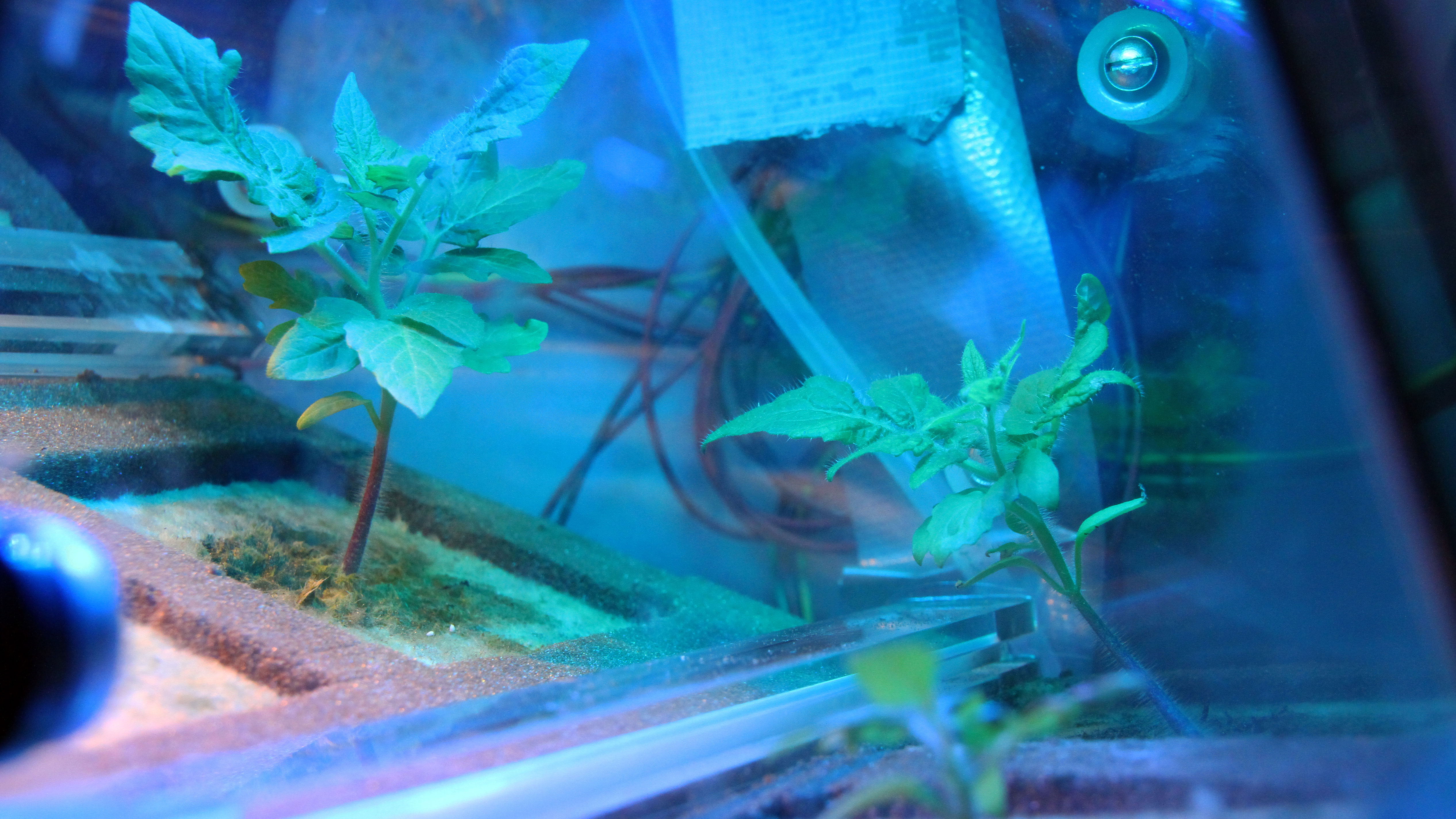How Urine Could Help Astronauts Grow Food in Space

If you want to be one of the first human beings to visit Mars, you better have a strong stomach. Scientists in Germany are testing ways in which urine and sweat could help astronauts grow food on the Red Planet.
Most food for missions to the International Space Station are brought as cargo from Earth. However, longer-duration space missions, such as those to Mars, will need a self-sustaining food supply, scientists have said. Jens Hauslage, a plant physiologist at the German Aerospace Center (DLR), is researching how to grow food in space, including a test system that involves a tank of urine and a tomato plant, the BBCreported.
"The Earth is a closed biological system with plants producing oxygen and food; then you have the animals and the microbes to produce all the degradation processes in the soil," Hauslage told the BBC. "Without these systems, no sustainable long-term life-support system will be viable." [Sending Humans to Mars: 8 Steps to Red Planet Colonization]
Using both synthetic and human urine, Hauslage is conducting lab experiments to re-create this cycle in a way that could be useful for space fliers, the BBC reported. For example, the scientists filled columns of urine with pumice stones, the hole-covered stones that form when lava mixes with water. Within the pumice stones' holes are colonies of bacteria that feed on the urine, converting the ammonia in the urine into nitrites and nitrate salts (a fertilizer).
Most water on the International Space Station — including that from urine, sweat and wastewater from washing — is recycled aboard the orbiting lab. Hauslage's research at the DLR is investigating other applications for this water, which is already efficiently captured and recycled, for growing food in space.
The lab research will launch into space later this year on DLR's Eu:CROPIS (short for Euglena and Combined Regenerative Organic-food Production in Space) mission, a satellite containing two miniature greenhouses, Space.comreported. The satellite will simulate lunar gravity for the first six months, to test the potential of growing vegetables on the moon, and then will simulate Martian gravity.
While the satellite orbits, 16 cameras will document the onboard tomato seeds that will germinate and grow automatically under. Just as in the lab experiments, the satellite growing environment will use bacteria to feed on synthetic urine, producing fertilizer for the tomatoes as they grow, the BBC reported.
Get the Space.com Newsletter
Breaking space news, the latest updates on rocket launches, skywatching events and more!
"Ultimately, we are simulating and testing greenhouses that could be assembled inside a lunar or Martian habitat to provide the crew with a local source of fresh food," Hauslage said in a statement about the mission last year.
Original article on Live Science.
Join our Space Forums to keep talking space on the latest missions, night sky and more! And if you have a news tip, correction or comment, let us know at: community@space.com.

Kacey Deamer is a journalist for Live Science, covering planet earth and innovation. She has previously reported for Mother Jones, the Reporter's Committee for Freedom of the Press, Neon Tommy and more. After completing her undergraduate degree in journalism and environmental studies at Ithaca College, Kacey pursued her master's in Specialized Journalism: Climate Change at USC Annenberg. Follow Kacey on Twitter.










